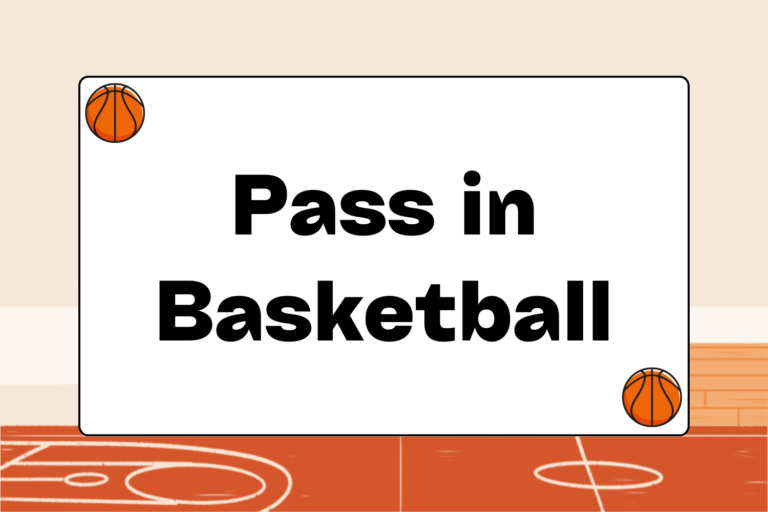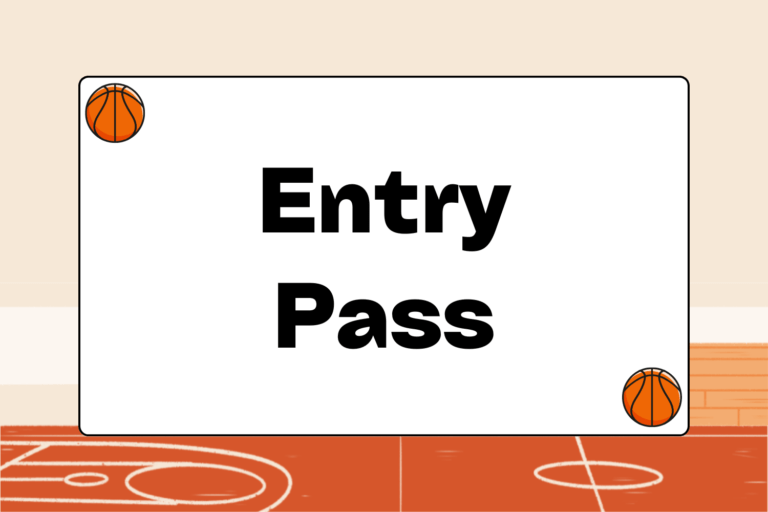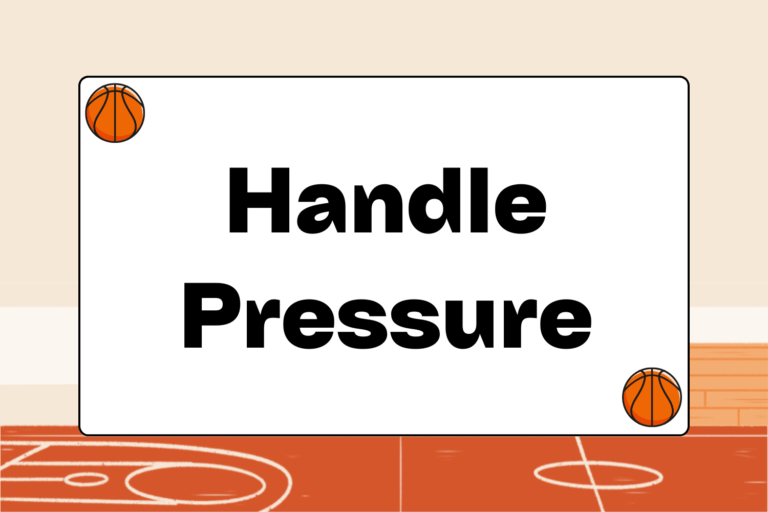Mastering a go-to offensive move is one of the most underrated facets of basketball. Coaches set up offensive systems, diagram plays, and give directions. Players run plays, set screens, and work to get open to receive a pass. But sometimes an offense breaks down. And sometimes that breakdown happens when the ball‘s in your hands and the shot clock’s about to expire.
Weapon of Choice
Having a go-to move gives you a chance to create a shot for yourself when nothing else is working in an offensive possession. It’s the move you’re most comfortable performing under pressure. It’s also a move you don’t have to think about to execute; you’ve practiced it a thousand times, and you can pull it off with your eyes closed, no matter who’s guarding you.
Your go-to move is a product of where you’re comfortable in the offensive zone. It’s also a product of your range as a shooter or ability to create space for yourself to shoot. It’s what you do best on offense, and what you practice when you’re alone with the ball and a basket.
A Solitary Game
Most people don’t realize it, but basketball is a great solitary activity.
Jerry West
Retired Hall of Fame NBA Player
It’s easy to forget that basketball can be an enjoyable individual activity. While it’s extremely fun to join a team and compete as a squad, basketball’s also a great activity to play alone. Many of the best professional players ascended to their level by spending tireless hours alone in a gym during the off-season or after practice.
Similarly, developing a signature go-to move is a one-man job. Coaches don’t generally teach go-to moves. Emulating teammates and opponents is only part of the process. The primary tool is endless hours of practice.
Your go-to move could be anything. It could be a jump shot from a specific part of the floor, or a fake that creates separation between you and an opponent. Ultimately, it should be a strong combination of what you like to do in the offensive zone and what you’re naturally good at.
Your Biggest Asset
When considering which move you want to develop into your best move, evaluate what you do best on the floor. A strong go-to move is the result of doing what you do best, and then doing it relentlessly:
- An exceptionally tall player might work on developing a jump hook in the paint.
- A player with a low center of gravity might work on establishing a turn-around jumper after gaining position on the low block.
As much as anything you can do on the court, your go-to move is your signature on the game. It’s the result of countless hours in the gym inventing the best move you can to get an open look. When developing your move, make sure it’s something you can repeat on the court. Work on it alone and transfer it to a game environment to make it yours.
Emulation
Copying moves from other players is the most common way that a player picks up a move. Even some of the top players in the National Basketball Association (NBA) come up with their signature moves after seeing them performed by other players.
A perfect example is Dwyane Wade’s Euro-step; it’s sort of a crossover maneuver he makes on the fast break after picking up the dribble, when a defender stands alone between him and the basket. Wade added this move after seeing multiple foreign players bring it to the NBA.
More Skill, Better Moves
Facing tough competition is the best way to improve on the court. When you face tougher competition, you’ll notice the players’ increased skill level up close. It’s impossible to love the game and not learn from extremely talented players. Sure, they may use that skill to blow past you on the court. But when you’re dazzled by your opponent’s offensive move, you might try to emulate it in practice to make it yours.
Analyze the Defense
Your league or group of friends might have a “book,” or well-known strategy, on how to defend you. Alternatively, players may naturally play you a certain way based on the first thing they see: For example, strong right hand, a highly developed jump shot, or the ability to penetrate off the dribble. The way you’re defended should mold the type of go-to move you can develop and use on the court.
- If defenders typically guard you closely, a jab step or dribble fake can be a good way to create space for a shot.
- If you’re adept at establishing position on the low block, a drop step or jump hook can be a great go-to move.
It’s a good idea to watch players with similar games and body types to get ideas. You can watch players on television or in your own league. Players with similar types of games have usually faced the same type of defenses that you’ll face. Their game has evolved based on the same defensive challenges that you face on the floor.
Fun Fact
Los Angeles Laker and All-Star Kobe Bryant developed the pump fake/pivot — one of his signature moves — because of the aggressive defenses he faces on a nightly basis in the NBA. He found that he could pivot away from his defender after pump faking to get a closer look at the basket.
Use Your Move Quickly
Demonstrating your go-to move early on can open up your game to other options. For example, knocking a solid turn-around jumper can give you the option to go up-and-under a defender the next time. Early dribble penetration can make a defender vulnerable for a jab step and jump shot.
Establishing that you have a reliable offensive move and converting it into buckets early in a game can make the defense look for that move. It’s possible to use this move to set up other moves.
Mental Edge
You should only work to establish an offensive move within the context of the game and based on the instruction of the coach. Never ignore a coach’s instruction to establish your go-to move.
Hard Work
In the end, figuring out your best go-to move and perfecting it requires trial-and-error and hard work in the gym. When the best players in the NBA add an offensive move to their game, they usually reveal it during the beginning of a new season. That’s because they have worked to master it during the off-season.
You may stumble across a move that you’re good at, and you may be able to use that move on the court effectively. But true mastery of a go-to move comes from endless hours of practice.





